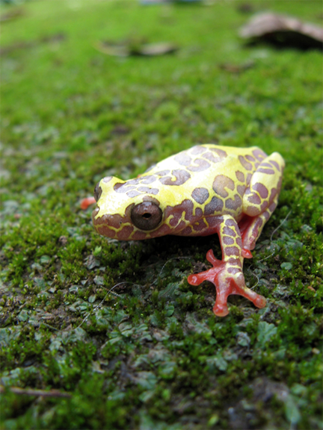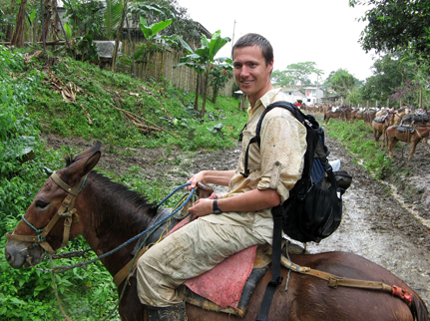Collection trip: Ecuador 2009
Participants: Stephen Stern, Eric Tepe, & Freddy Villao.
This five-week collecting trip was focused on collecting Solanaceae from the Amazon, Andes, and Western Coast of Ecuador. We were based in Quito at the Herbario Nacional (QCNE) and received a lot of help from the staff there. Additionally, we spent time at the Pontificia Universidad Católica del Ecuador (QCA) and the Biblioteca Ecuatoriana Aurelio Espinosa Pólit (QPLS) examining the Sodiro collections.
We spent our first two weeks working our way down eastern slopes of the Andes into the Amazon. We had a few very productive days at the Yanayacu Biological Station (www.yanayacu.org) near Cosanga collecting a number of fascinating cloud forest specimens before descending into the steaming lowlands. Our base in the Amazon was the Universidad Internacional SEK Biological Station in Limoncocha. Here we collected a new species in the Herpystichum clade which will soon be described by Eric Tepe.
After a couple of days in Quito to dry our collections, we headed to the coastal lowlands. Our route took us south by the base of the extinct volcano Chimborazo, the highest peak in Ecuador. Unfortunately this snowcapped mountain offered little collecting opportunity so we had to pass by without summiting. On this descent to the lowlands we were able to collect Solanum over an altitudinal gradient from a lofty 4000 m to the, once again, steaming lowlands at <100 m.
Our first stay in the lowlands was at the Río Palenque Biological Reserve, where Freddy Villao, the resident biologist, joined us for the next week of lowland collecting. Río Palenque Biological Reserve contains some of the last intactlowland forests in Ecuador as most of the rest of the land has been converted into banana, pineapple, and African oil palm plantations. After scouring Río Palenque for Solanum, we headed to the coast in the Manabi Province to look for a new species in the Gonatotrichum clade. This species had been very rarely collected and remained unnamed. We luckily found two populations, one as a very sparse population during a death march up Cerro Montecristi and another population growing as a roadside weed very close to the Pacific Ocean.
Our final field stop was the Bilsa Biological Reserve in the Coastal Mountains. This Reserve was a challenge to get to as the rainy season turns the road into a 14 km slog through knee-deep mud. Luckily we were able to rent mules to help with the march, however, the rough wooden saddles left much to be desired for the tender botanists. Collecting here was guided using a checklist produced in part by former PBI:Solanum post-doc John L. Clark. We were able to collect most of the species in the checklist and have a few species to add to his list!

Eric and Stephen with the catch of the day, a new species of Solanum,
at the Limoncocha Biological Reserve

A local resident of the Limoncocha Biological Reserve

A spiny member of Solanum section Erythrotrichum

Eric thinks it is funny that Stephen will have to press thegiant
inflorescence of this member of Solanum section Torva

Solanum circinatum at the Río Palenque Biological Reserve

Eric realizes the problem with working on viny Solanums -
they can climb better then we can

A well-defended caterpillar at the Bilsa Biological Reserve

Stephen with the prize- a new species of Solanum!

This new species of Solanum was hard to overlook!

Stephen thrilled that the 4-hour mule ride is over

The magnificent Volcán Chimborazo (6384 m)

Stephen, Freddy Villao, and Eric on the summit of Cerro Montecristi,
a hill that changes from
a desert-like scrub forest at the base
to a lush tropical forest at the summit

